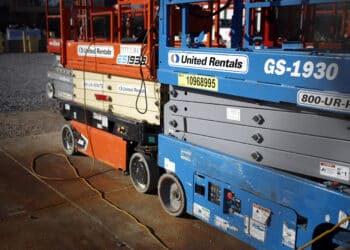Demand for bundled, as-a-service products continues to grow in the equipment industry as more customers seek complete solutions.
To meet consumer demand, more manufacturers and service providers see bundling of services and the as-a-service model as the solution, LeaseAccelerator Chief Executive Michael Keeler told Equipment Finance News.
“That thrust that manufacturers and service providers have in making it easier for their clients to do business with them and keeping them in the monthly payment cycle is where many companies that traditionally used to sell for cash, and the customers would lease separately, that’s where they’re going,” he said. “It’s all integrated in the go-to-market strategy, and that is [in] direct contrast with what we saw 20 or 30 years ago.”
The equipment rental/as-a-service industry is experiencing global growth amid strong pricing and rates, according to the Houlihan Lokey EaaS Index, which consists of 20 diversified companies across the equipment-as-a-service sector. The index grew 30.6% year over year in 2023, with the North American market growing 31.7% YoY.
“The standard [used to be] where you had a manufacturer who would establish a vendor captive leasing company, but now people want to integrate,” Keeler said. “They want to integrate it with their existing infrastructure, their contract system, their asset management system and their ERP [enterprise resources planning] platform, and they want the last word count, you just plug into that and be able to run straight through processing, so they can scale very efficiently.”
Meeting consumer needs

The decision to swap to the EaaS and vendor captive leasing model often comes from necessity, Keeler said.
“A lot of manufacturers fall into it organically,” he said. “What happens is a swashbuckling, creative salesperson listens to their customer, and their customer says, ‘I really want to be able to have one throat to choke, with one brand that’s got a big balance sheet that stands behind your product, and I want to be able to get everything that I buy from you … and I want to pay one monthly fee.’ That’s what’s driving it.”
Consumer demand is driving the as-a-service shift, but controllers and executives must make the adjustments necessary for the business model, especially if a captive exists, Keeler said.
“The lessor requirements sometimes sneak up on controllers, especially internationally, but it’s happening more and more because customers are asking for it,” he said. “At an executive level, when there is something strategic there, it’s about moving to an as-a-service, pay-as-you-go model.”
As a result, lenders like Mitsubishi HC Capital America continue to provide as-a-service models for commercial segments like charging and robotics. For example, it added charging-as-a-service for vehicle OEMs and commercial customers through a partnership with electric vehicle charging station manufacturer Electrada on May 16.









